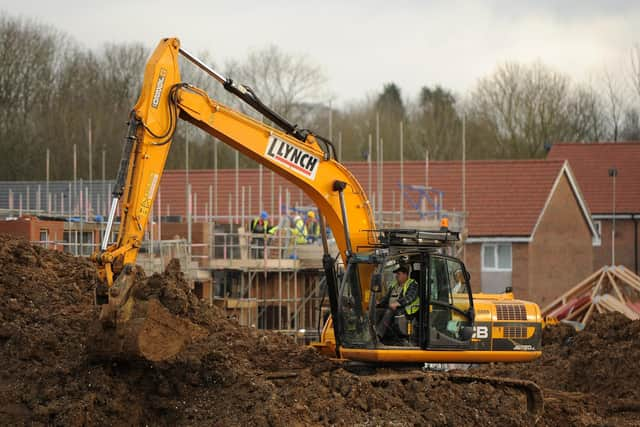Building on brownfield sites offers an alternative to greenbelt development - Jo Gideon
The Levelling-Up and Regeneration Bill, which is set to pass into law in 2023, will hopefully help achieve this. As part of this, the homes that are built need to be safe and in the right place, and for that we need to shape places to make them right.
Poor planning can lead to rundown town centres, unsafe and dilapidated housing and the loss of countryside. As one of the current Government’s goals for planning, protection of the environment implies the idea of retaining as much open space as possible.
Advertisement
Hide AdAdvertisement
Hide AdBuilding on brownfield sites offers a great alternative option to greenbelt development. By regenerating areas of land that have been used for industrial or commercial purposes in the past but are no longer in use, we can protect valued green spaces for future generations. This will also create opportunities for construction work as the economy recovers after the Covid-19 pandemic, saving the livelihood of construction workers and boosting local economies.


However, because of the issues surrounding the re-use of brownfield sites, developers have historically been reluctant and unenthusiastic to make use of them for any new planned schemes.
There can be great costs associated with the clean-up of a brownfield site depending on its previous employment – a complex process that requires the involvement of a number of different agencies and stakeholders. In addition, it is necessary to ensure that any new development meets the required building and planning standards. While the re-use of brownfield sites provides great opportunities, development mistakes can have long-lasting consequences.
The legacy of the pottery industry of Stoke-on-Trent is present in the former clay pits. Although the site was redeveloped, the local area of Boatman Drive is experiencing ongoing issues. Several hundred houses were built on the site of an old marl hole, or clay pit. Several years ago, cracks began to appear in the road. The scale of ground movement has increased over time and is beginning to impact more homes in the affected area. Not only has the only road into the housing estate area been closed for three years, but there are also concerns about the safety of local properties. Homeowners are facing increased insurance premiums and devalued properties or are unable to sell their homes, while the situation remains unsolved.
Advertisement
Hide AdAdvertisement
Hide AdA council-commissioned report suggested that the problem was likely due to adverse soil and water interaction within the backfill deposits to the former marl pit on which the estate is built. The local geology is made up of soft mudstone used in the ceramics industry.
Subsidence, a product of soil erosion within the backfill pit material, has possibly caused significant defects to underground water and drainage pipes. Subsidence is a word dreaded by homeowners and builders alike, as it can affect a house’s structural safety and value. As the ground moves lower, the foundations of houses can become misaligned. Particularly with clay soils, weather can change the material a lot. When it is hot and dry, it can shrink and crack, making the ground unstable increasing the risk of sinking.
The problems faced by those in Boatman Drive along with other brownfield developments across the country are impacted by similar issues and have significantly affected local residents' wellbeing. This has particularly impacted vulnerable people, who found it harder to manage the challenges, including access to ambulances for those with health emergencies.
Part of the task of levelling up is to address the legacy of the past. The scars of deindustrialisation continue to make the task of regeneration complex, as places such as Stoke-on-Trent address abnormal site issues: land contamination, decaying industrial structures and the enduring misuse of brownfield land and old buildings. We used to have a specialist national organisation to support local areas in dealing with these sites. English Partnerships, dissolved in 2008, did fantastic work in supporting areas around the country in resolving these conundrums, unlocking latent commercial value.
Advertisement
Hide AdAdvertisement
Hide AdI am very uncertain where that help and support comes from today. This is why I think it is time to consider whether there is a case for recreating an expert body that is properly resourced to resolve these problems and accelerate economic recovery.
Jo Gideon MP is the Conservative MP for Stoke-on-Trent Central and a member of the Leasehold Reform Bill parliamentary committee. This article first appeared in Bright Blue's latest essay collection, Home advantage: a centre-right vision for housing.